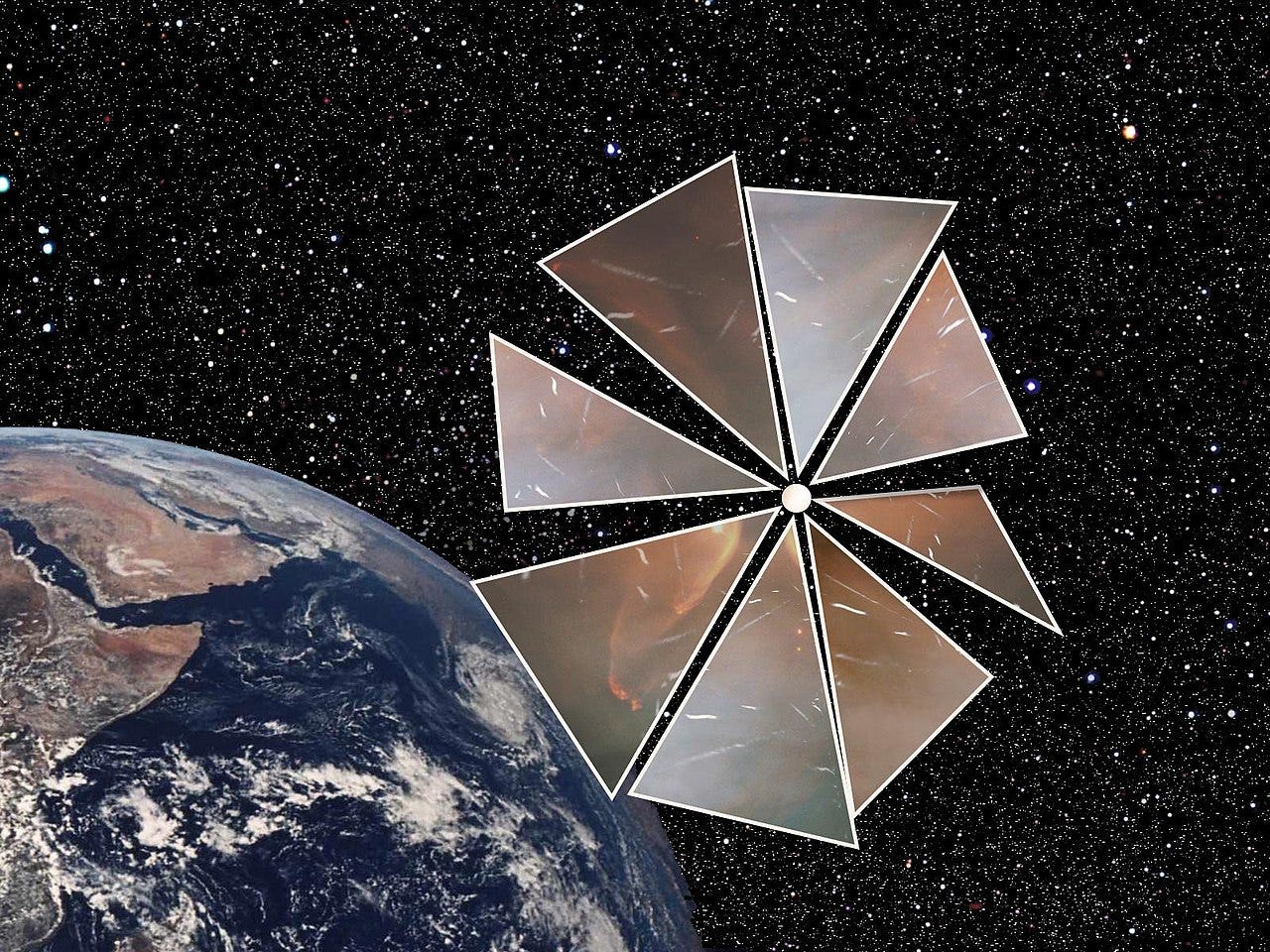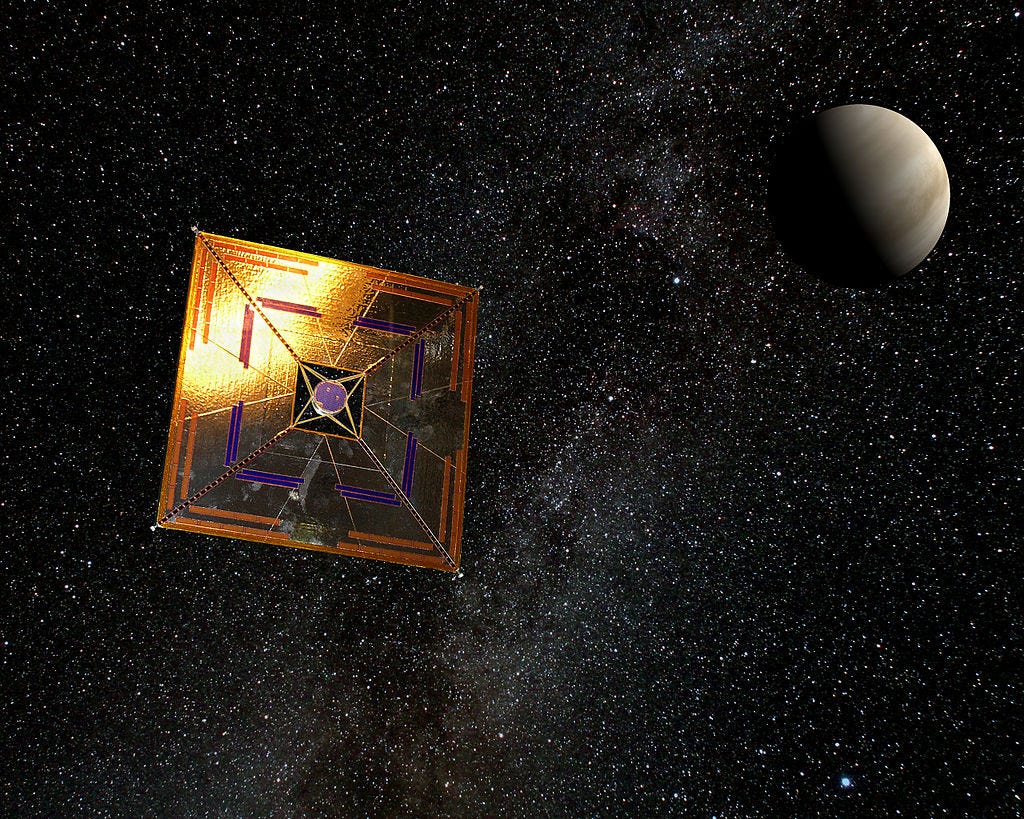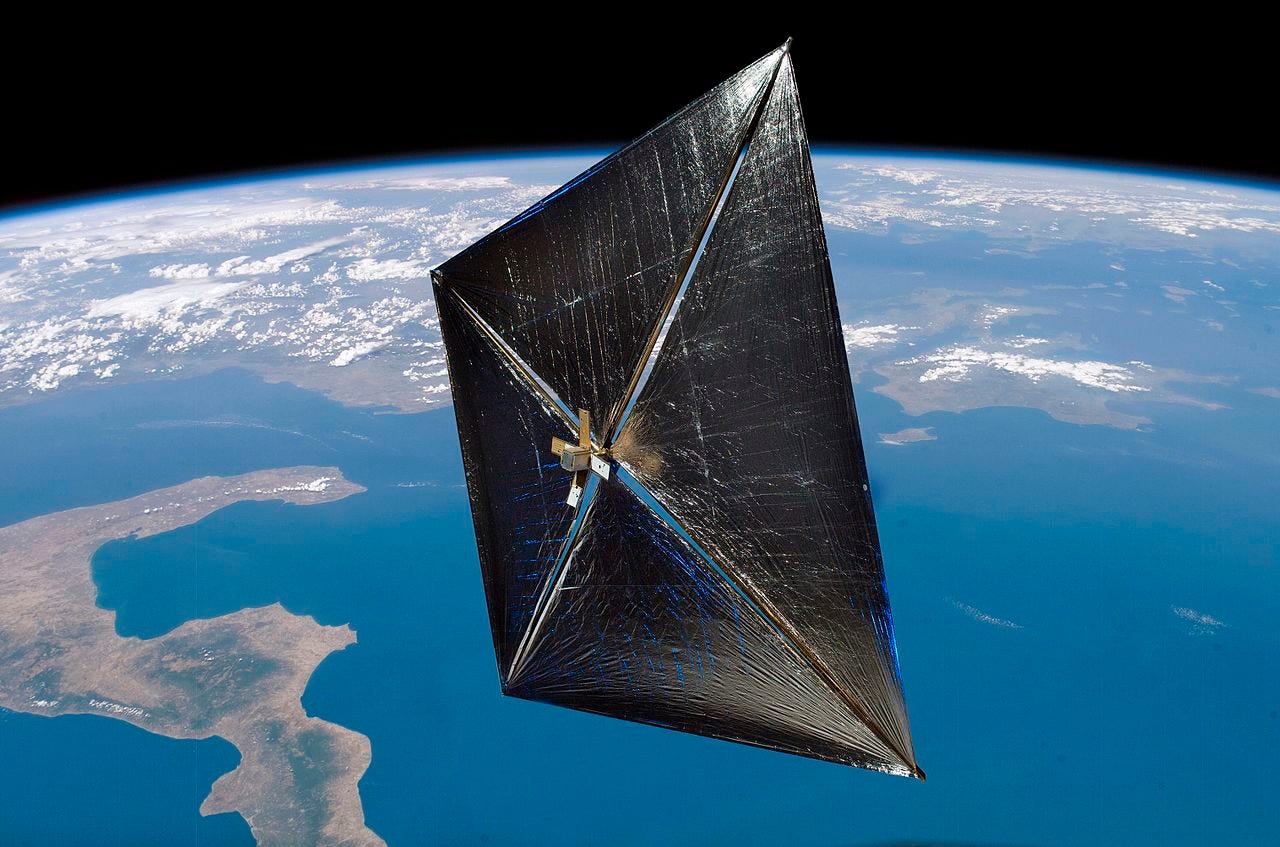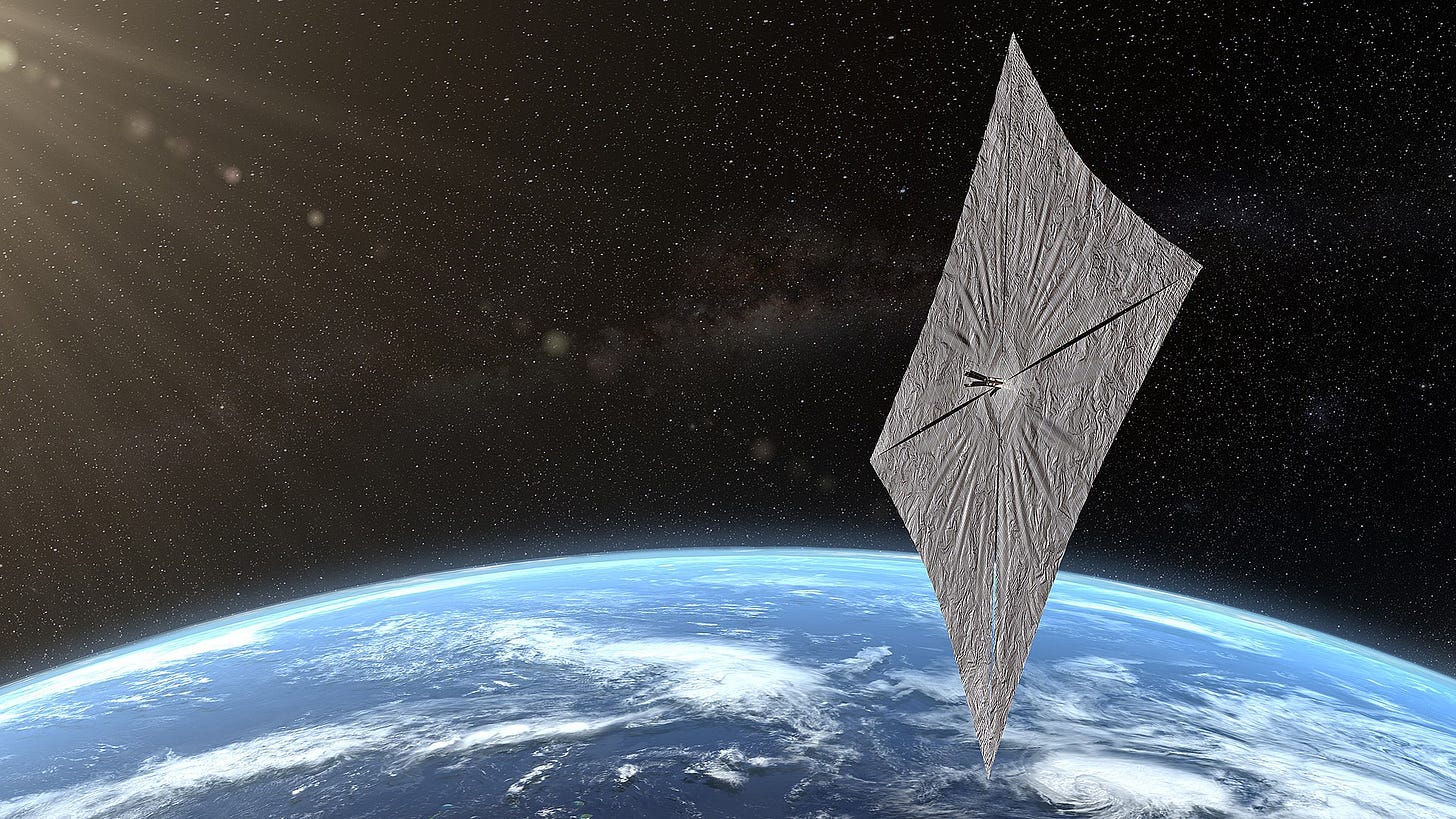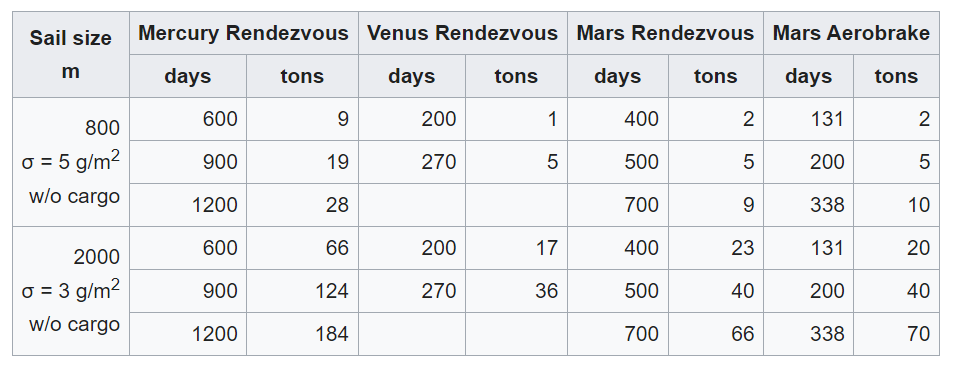Propulsion using Sunlight
Can we sail in space just like a sailboat?
#We are making something exciting for space and astronomy fans, check here.
In previous two articles we have discussed about ion-propulsion and nuclear propulsion. In this article we will cover a lesser known propulsion technique that uses the force of sunlight Solar Sails
Introduction
Solar sails leverage the power of sunlight to generate thrust, enabling spacecraft to travel through the space propelled by the gentle push of photons. Let’s understand how it works.
Refer to the above diagram. The black diagonal line represents a flat reflector (mirror). The blue ray coming from the bottom is the incident light photon coming from the sun and striking the surface of the reflector. After striking the mirror reflects it away and in doing so, changes the momentum of the incident photon. And following Newton’s second law of motion, this creates a reaction force in the opposite direction of the change in momentum. This is the force that is being used for the purpose of Solar Sails.
This is very much analogous to air-wind striking on the sails of sailboats. Here instead of air, the light radiation applies the force.
Ah.. that force must be small?
The total force exerted on an 800 by 800 meter solar sail, for example, is about 5 N at Earth's distance from the Sun, making it a low-thrust propulsion system, similar to spacecraft propelled by electric engines. Yes, it does seem a super-low force, especially when compared to chemically propelled rockets, but as this system uses no propellant at all, that force is exerted almost constant and the collective effect over time is great enough to be considered a potential manner of propelling spacecraft.
Also note that, one should not confuse this force, which is due to the Solar Radiation Pressure (pressure from light photons) with that of the force due to Solar Wind — which is a stream of charged particles released from the upper atmosphere of the Sun, called the corona. The Solar wind does provide additional force upon striking the solar sail, but of extremely low magnitude — about 1000 times less.
A brief history
In the years 1861-1864, James Clerk Maxwell presented his theory on electromagnetic fields and radiation, revealing that light possesses momentum and can exert pressure on objects. This discovery laid the groundwork for the concept of sailing using light pressure and the scientific community recognized that sunlight carried momentum capable of exerting pressure on objects.
In 1899, Pyotr Lebedev successfully demonstrated the existence of light pressure using a torsional balance. Shortly after, in 1901, Ernest Nichols and Gordon Hull independently conducted a similar experiment using a device called a Nichols radiometer.
In terms of space exploration, Konstantin Tsiolkovsky was the first to propose the utilization of sunlight's pressure to propel spacecraft through space. He suggested the use of enormous mirrors made of thin sheets to harness the pressure of sunlight and achieve cosmic velocities.
Formal efforts to develop solar sail technology and designs began in 1976 at the Jet Propulsion Laboratory. The objective was to create a solar sail for a proposed mission to rendezvous with Halley's Comet.
Successful Missions
IKAROS
IKAROS (Interplanetary Kite-craft Accelerated by Radiation Of the Sun) is a Japan Aerospace Exploration Agency (JAXA) experimental spacecraft. It is the first spacecraft to successfully demonstrate solar sail technology in interplanetary space. On 8 December 2010, IKAROS flew by Venus at a distance of 80,800 km successfully completing its planned mission, and entered its extended operation phase.
IKAROS has a square sail, deployed via a spinning motion using 0.5-kilogram tip masses located at each of the four corners of the sail. It is is 20 m long diagonally and is made of a 7.5-micrometre thick sheet of polyimide.
IKAROS is to be followed by a 40 by 40 metres sail, the OKEANOS (Oversize Kite-craft for Exploration and Astronautics in the Outer Solar system). It is intended to journey to Jupiter and the Trojan asteroids, to be launched in 2026, with a proposed goal of returning an asteroid sample to Earth in the 2050s.
NanoSail-D
This was a cubesat launched in 2010 and deployed in low earth orbit. It was also NASA’s first solar sail. The objectives of the mission were to test sail deployment technologies, and to gather data about the use of solar sails as a simple, "passive" means of de-orbiting dead satellites and space debris.
Light Sail 2
LightSail 2 was a CubeSat fitted with a large solar sail covering 32 square meters. It was launched on 25 June 2019 and deployed by the Prox-1 carrier satellite into a low Earth orbit at over 720 km orbital altitude. It successfully demonstrated that solar sailing is a viable means of propulsion for small satellites.
Potential Applications
Solar sails hold immense potential for future space exploration. They can enable cost-effective, long-duration missions to distant destinations within the solar system and beyond. Solar sails are particularly suitable for missions that require continuous acceleration over extended periods, such as interstellar exploration or delivering payloads to outer planets. They offer the advantage of not requiring onboard propellant, reducing spacecraft weight and allowing for more significant payload capacity.
Solar sails can travel to and from all of the inner planets. They can deliver payloads and then return to Earth for subsequent voyages, operating as an interplanetary shuttle. Check the below table to get rough idea on the time that is estimated for carrying different amount of payloads and the sail size.
Conclusion
Solar sails represent a remarkable leap forward in space propulsion technology. Harnessing the power of sunlight and the gentle push of photons, these ingenious sails provide a sustainable and efficient means of propelling spacecraft through the cosmos. Successful missions like IKAROS and LightSail 2 have demonstrated the viability of solar sails, paving the way for exciting future exploration endeavors. With their potential for long-duration, low-thrust missions and the ability to reach distant corners of the universe, solar sails offer a promising pathway to unraveling the mysteries of space. As research and development continue, solar sails may very well become a cornerstone technology in humanity's quest to explore and understand the cosmos.
What type of propulsion system you wish, were a reality? or the opposite, which of the current propulsion systems you would love to see become obsolete? Share your thoughts in comments and we would discuss.




